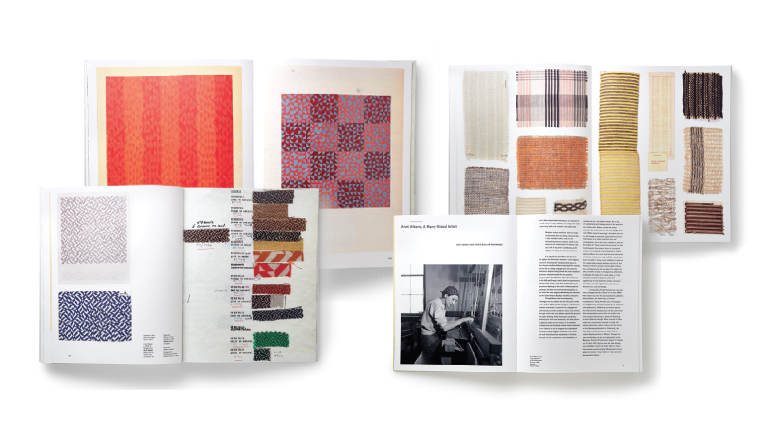Forebears and the Future
Forebears and the Future
Anni Albers
Edited by Ann Coxon, Briony Fer, and Maria Müller-Schareck
Yale University Press, $50
In 1981, Anni Albers won the American Craft Council Gold Medal for her work in fiber, adding it to her substantial and lofty collection of awards. However, a common sentiment holds that her immense contributions to her field still haven’t received the recognition they deserve, because of the high-wattage celebrity of her Bauhaus contemporaries, perhaps, and because textile work historically has not been held in as high regard as painting or sculpture. In the introduction to Anni Albers, a new comprehensive look at the pioneering artist, the editors write that they aim to “question the hierarchy of mediums of which Albers spoke and provide long-overdue recognition.”
The pages that follow are filled with stunning images of Albers’ work alongside essays detailing the various stages of her creative life. What results is a fascinating glimpse into history, a thought-provoking narrative of the artist once dubbed a “reluctant weaver” who became a fiber virtuoso. It’s also a reminder that it is the quality of the imagination, not the mode of its expression, that truly distinguishes art. ~Alia Jeraj
How to Be a Craftivist: The Art of Gentle Protest
By Sarah Corbett
Unbound, $21.95
Sarah Corbett got her start in craftivism in the late 2000s, when she reached out to a lawmaker in an uncommon way. “My local politician had been ignoring my petitions and requests to take particular actions against injustice,” Corbett writes, “so I hand-embroidered a message on to a handkerchief.” She found that her gift had more of an effect than signing online petitions – and so began a career of meaningful political making.
Over the course of her book – which focuses on European politics but has lessons that apply everywhere – Corbett lays out the strategies and advantages of craftivism. Political making, she argues, can include people not constituted for the rah-rah settings of marches and rallies; it can make adversaries into “critical friends rather than aggressive enemies.” In Corbett’s telling, the investment of time that craft requires creates the possibility of more lasting change. “We focus on long-term transformation,” she writes, “not quick, short-term transactions of relief.” ~Robert O’Connell
Jewelry for Gentlemen
By James Sherwood
Thames & Hudson, $45
On the scale of human history, men’s jewelry is nothing new; as James Sherwood’s introduction notes, “Celtic thanes, Egyptian pharaohs, and Chinese emperors all chose sartorial treasures.” In recent decades, though, jewelry has been most associated with women, with men’s pieces restricted – in mainstream culture, at least – to expensive watches and boring tie clips.
Sherwood, a London fashion journalist, lays out a convincing case that attitudes are changing. After acquainting the reader with the historical trends of men’s jewelry, he notes how they have been revived. The book is broken into categories containing short histories of the cufflink’s or pendant’s re-emergence at galas and on red carpets. (Movie stars abound.)
The aim here is to enable readers to adapt A-listers’ looks to their own ends; “Jewelry for Gentlemen takes a pragmatic rather than a fantastical stance on the subject,” Sherwood writes. One wonders, though, whether cultivating personal style is sacrificed on the altar of fleeting trends. ~Robert O’Connell

